Attracting Hummingbirds & Butterflies
The daring antics of hummingbirds and effortless floating forms of colorful butterflies bring a garden to life and offer the promise of entertainment and serenity in our gardens. While hummingbirds and butterflies share the basic needs of food, water, and shelter, their lifecycles are very different; and they have different food and habitat requirements. Getting to know your visitors and providing for their needs is the key to attracting these delightful guests.
Plants that Attract Hummingbirds
The Power of Color

Have you ever been buzzed by a hummingbird when you were wearing red? The number one way to attract the attention of hummingbirds is with vivid colors. They recognize red and other hot colors as potential nectar rich flowers. You can use the power of red as an attention-getter in your yard.
| • | Autumn Sage/Salvia greggii |
| • | Baja Red Fairy Duster/Calliandra californica |
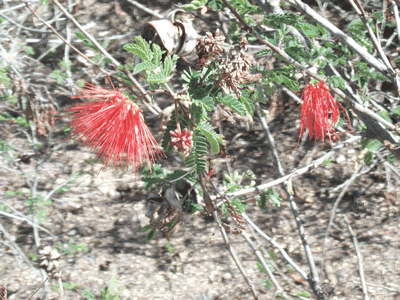
| • | Chuparosa/Justicia californica |
| • | Firecracker Penstemon/Penstemon eatonii |
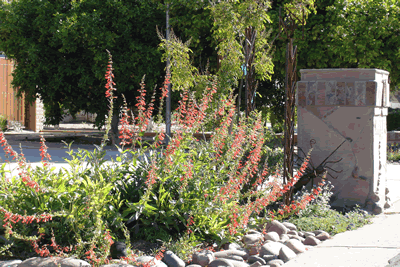
Although the hot colors attract attention, the plant palette of your landscape need not be limited to vibrant shades of red and orange. Once in your yard, hummingbirds will move through the garden and visit flowers of other colors as well.
| • | Desert Lavender/Hyptis emoryi |
| • | Parrys Penstemon/Penstemon parryi |
| • | Purple Ruellia/Ruellia brittoniana |
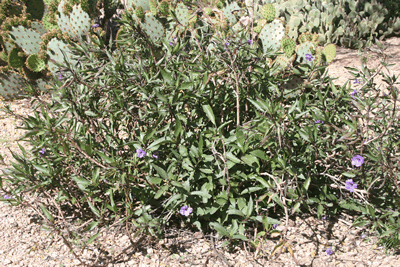
| • | Yellow Bird of Paradise/Caesalpinia gilliesii |
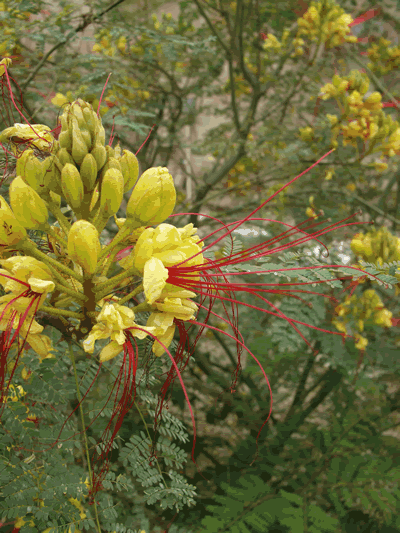
Flowers that Fit
The type of flowers on a plant can also attract hummingbirds. Because the hummingbirds bill is long and slender, tubular flowers are a perfect fit. A tiny tongue quickly empties the nectar from the base of the flower, and the hummingbird darts to the next blossom. Providing clusters of tubular flowers will entice the hummingbird to linger at a plant while it empties the nectar.
| • | Cape Honeysuckle/Tecomaria capensis |
| • | Desert Willow/Chilopsis linearis |

| • | Orange Bells/Tecoma hybrid |
| • | Red Yucca/Hesperaloe parviflora |
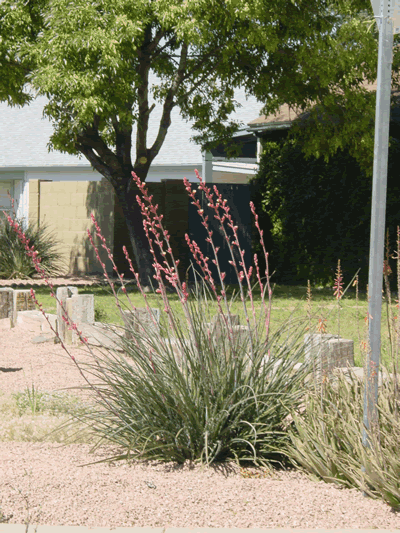
The Importance of Variety
Variety is essential to keep hummingbirds coming back to your yard. Offer a variety of plant choices and long blooming periods to extend their food source through the seasons. Incorporate annuals, perennials, and succulents, as well as shrubs, vines, and trees into the landscape to provide a wide variety of forms and flavors for your tiny visitors. Also include desert native plants to attract migrating hummingbirds. Many native plants offer colorful blooms through the seasons and can provide an important food source in spring and fall that migrating hummingbirds recognize.
| • | Arizona Yellow Bells/Tecoma stans |
| • | Chuparosa/Justicia californica |
| • | Ocotillo/Fouquieria splendens |
| • | Queens Wreath/Antigonon leptopus |
Seasonal Flowers
Many annuals and perennials produce dazzling displays of seasonal flowers. When used in containers, they can be moved to protected areas to prolong their performance. Hummingbirds are often fearless in their pursuit of food and will venture to patios and porches. Even the smallest patio or garden can offer a hanging basket of tempting blossoms.
The various species of salvias can offer a wide range of seasonal bloom periods and planting options from container gardening to hot sunny areas or shady spots in the yard.
| • | Autumn Sage/Salvia greggii |
| • | Chaparral Sage/Salvia clevelandii |
| • | Cherry Red Sage/Salvia coccinea |
| • | Mealy Cup Sage/Salvia farinacea |
Accent Plants in the Garden
The unique forms of accent plants focus attention and add interest to a garden. Succulents such as aloes and agaves are well suited for both garden planting and containers and have enormous appeal to hummingbirds. Aloes, which typically bloom in the winter, are striking accent plants that offer excellent nectar flowers during the season when most plants are dormant.
The various agaves, although similar in form, may be seen blooming throughout the seasons. However, the agaves bloom signals the end of its life. While some agaves are long lived, many end their life span in 5-10 years, sending up a spectacular bloom stalk that rises high above the rosette form. The stalks are beautiful and particularly alluring to hummingbirds for flowers, insects, and perching.
| • | Aloe Vera/Aloe barbadensis |
| • | Dawes Aloe/Aloe dawei |
| • | Smooth Agave/Agave desmettiana |
Trees and Shrubs
Larger plantings of trees and shrubs create a diverse microclimate in the yard, offering shade for plants and wildlife as well as food, nesting sites, and perches for hummingbirds. The territorial nature of hummingbirds induces them to claim and guard feeding territory. Perches allow them to survey their territory and provide a vantage point from which to give chase to intruders.
| • | Creosote Bush/Larrea tridentata |
| • | Desert Willow/Chilopsis linearis |
| • | Ironwood/Olneya tesota |
| • | Palo Brea/Cercidium (Parkinsonia) praecox |
Other Essentials
Hummingbirds cannot survive on nectar alone. Insects are also essential to their diet. They often feed on small insects found on plants as well as flying insects. Spiders may also offer a tasty treat, and their webs are often used to build tiny nests and secure them in place.
Most insect populations in the garden fluctuate with the seasons and are not a threat to the health of landscape plants. Because pesticides kill small insects that birds feed upon and may be ingested through nectar or from residues on flowers, use pesticides thoughtfully.
| • | Desert Milkweed/Asclepias subulata |
Plants that Attract Butterflies
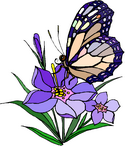
The Main Attraction

Photographer: Kathleen Moore
A garden that offers colorful and abundant nectar flowers is the surest way to catch the attention of passing butterflies. Nectar is the main food source of butterflies, but unlike hummingbirds, butterflies need flowers that can serve as landing pads from which to sit and sip the nectar. Flowers with broad blooms or clusters of many small blossoms that present a flat platform are ideal. Fragrant flowers in white, yellow, pink, and the range of lavender to purple seem to be particularly tempting.
| • | Flattop Buckwheat/Eriogonum fasiculatum |
| • | Lantana (any species) |
| • | Verbena (any species) |
| • | Wooly Butterfly Bush/Buddleja marrubiifolia |
Vary Sizes and Forms
The foraging habits of butterflies often vary with their size. Small butterflies typically seek nectar from low-growing plants, and larger butterflies may soar to the tops of trees for nectar. A variety of plant sizes will accommodate the needs of all.
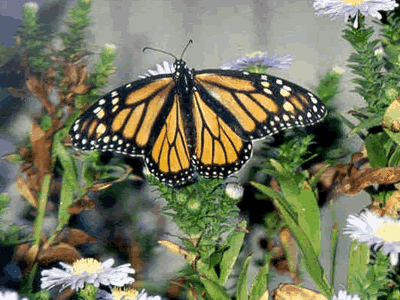
Photographer: Cathy Rymer
A monarch butterfly enjoys the flowers of Rodneys Aster.
While colorful annuals and perennials offer an array of nectar rich treats, butterflies also seek shelter from heat, cold, and wind. Providing open forms of shrubs that offer easy access to perching will encourage them to seek shelter in your garden.
| • | Baja Red Fairy Duster/Calliandra californica |
| • | Bee Bush/Aloysia gratissima |
| • | Golden Dyssodia/Dyssodia pentachaeta |
| • | Kidneywood/Eysenhardtia orthocarpa |
Trees and Shrubs
Trees and large shrubs can add the dimension of height to the butterfly garden and also offer shade, perching sites, and gathering places for nightly roosting. Choose a favored flowering tree or shrub for a doubly powerful attraction in the yard.
| • | Chaste Tree/Vitex agnus-castus |
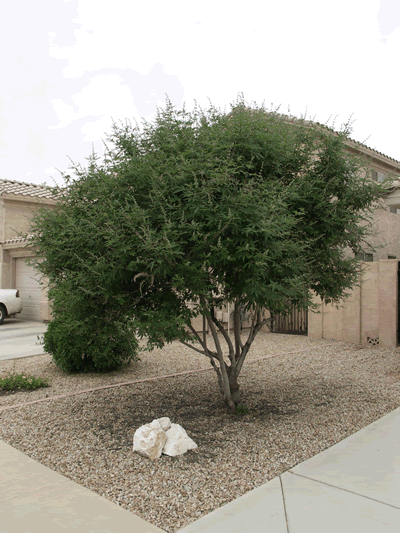
| • | Desert Hackberry/Celtis pallida |
| • | Featherbush/Lysiloma microphylla |
| • | Red Bird of Paradise/Caesalpinia pulcherrima |
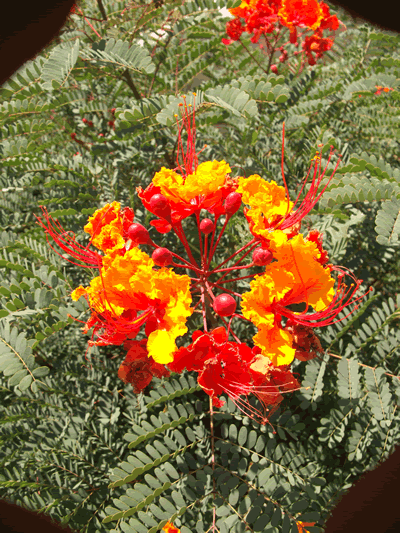
The Fascinating Lifecycle
In addition to food and shelter, butterflies eagerly search for plants that serve as food or host plants for their offspring. Recall the wonder and delight you felt at watching a butterfly emerge from a cocoon. Including host plants in the garden adds to the fun and enjoyment of this fascinating visitor and serves not only to attract butterflies, but also to provide habitat that is essential to their survival.
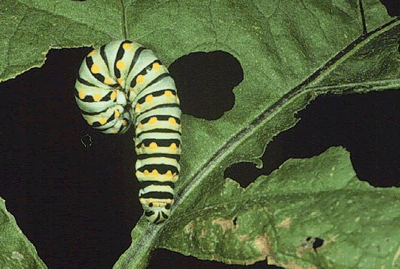
Host plants are often specific to certain species of butterflies. For example, milkweeds are the food plant for the caterpillar stage of Queen and Monarch butterflies. Often used as an accent plant, Desert Milkweeds slender stems are crowned with clusters of nectar rich flowers. This interesting plant also offers nectar for a variety of butterflies and is attractive to hummingbirds as well.
| • | Baja Passion Vine/Passiflora foetida |
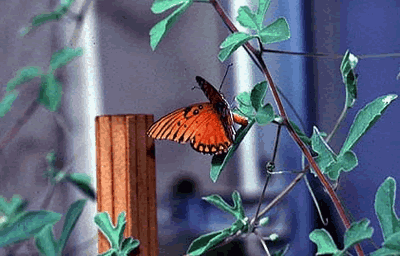
The Gulf Fritillary butterfly uses the Baja Passion Vine as its larval food source.
| • | Desert Milkweed/Asclepia subulata |
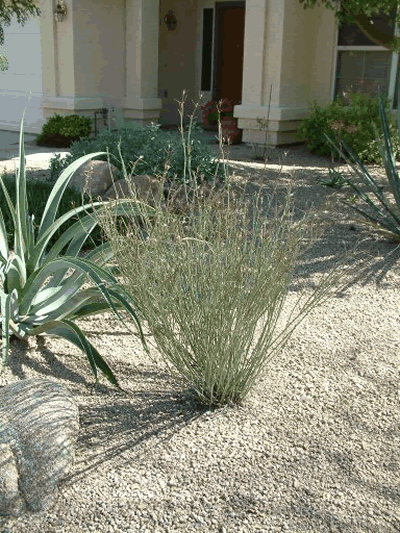
| • | Sideoats Grama/Bouteloua curtipendula |
| • | Velvet Mesquite/Prosopis velutina |
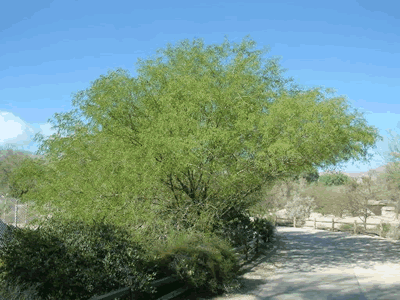
Migrating Visitors
Dont forget to incorporate plants that are native to our region into the butterfly garden. Like migrating hummingbirds, seasonal migrations of butterflies may pass through the garden. Offering plants that are familiar to seasonal visitors may attract attention and increase the allure of your yard.
| • | Brittlebush/Encelia farinosa |

| • | Bush Dalea/Dalea pulchra |
| • | Desert Senna/Senna covesii |
| • | Globe Mallow/Sphaeralcea ambigua |
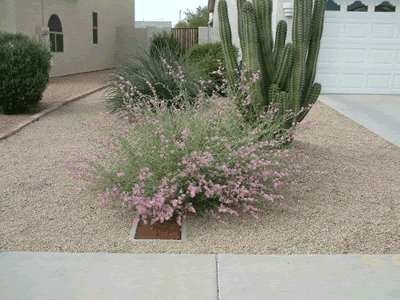
Ask Your Local Nursery
Most local nurseries carry native and desert-adapted plants that are appropriate for our region and will often order plants for you as well. Whether you are planning a garden to attract hummingbirds or tempt butterflies to visit, youll find a wide assortment of plants that will welcome them into your yard.
Reference
Desert Bird Gardening. Arizona Native Plant Society. 1997.
Desert Butterfly Gardening. Arizona Native Plant Society. 1996.
Desert Hummingbird Gardens. Sylvia Yoder, Real Estate Consulting and Education, Inc. 1999.
Desert Landscaping for Beginners. Cathy Cromell, ed. Arizona Master Gardener Press, 2001.
Earth Friendly Desert Gardening. Cathy Cromell, Jo Miller, and Lucy K. Bradley. Master Gardener Press, 2003.
Robyn Baker
Water Conservation Specialist
City of Scottsdale